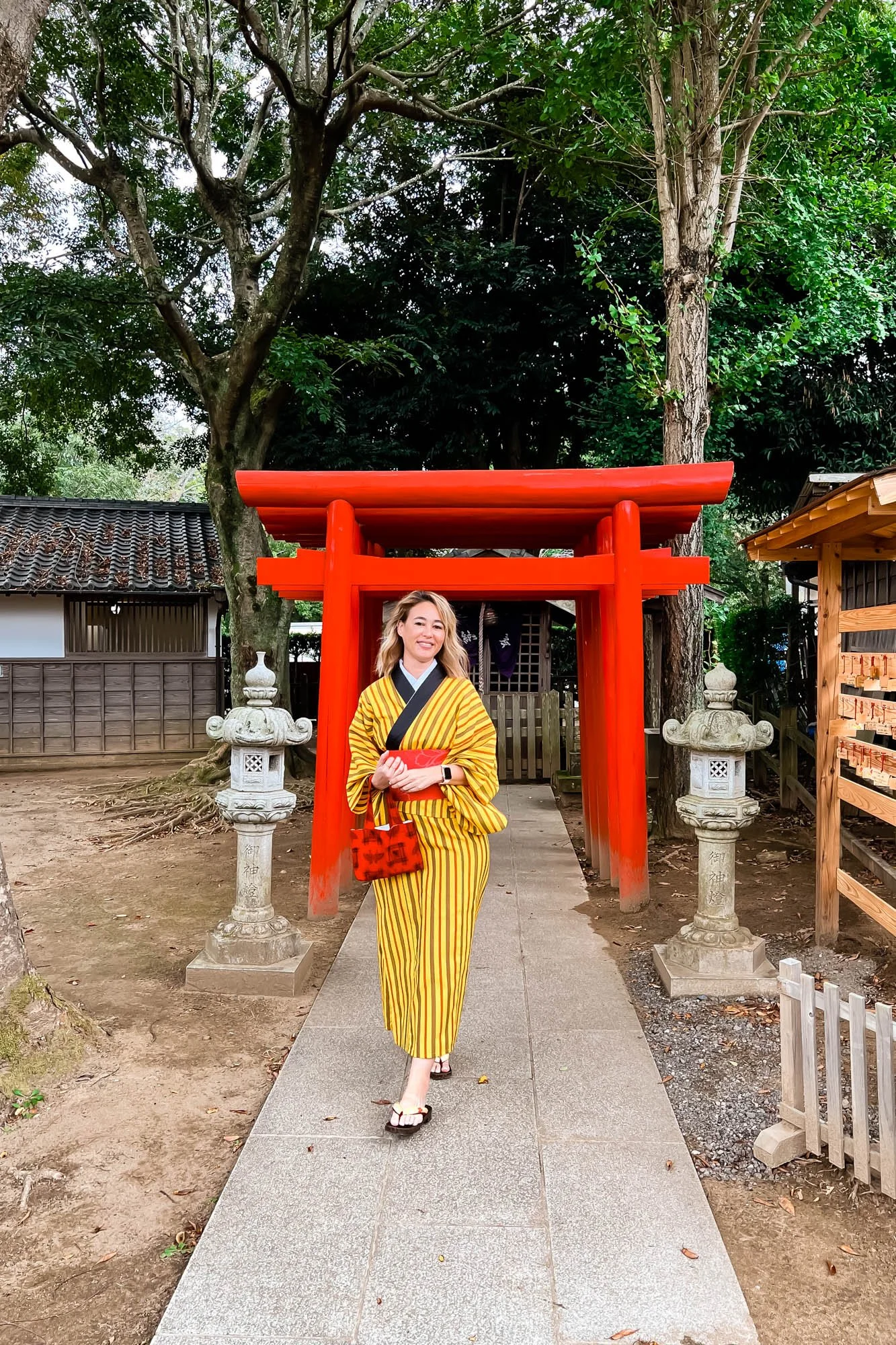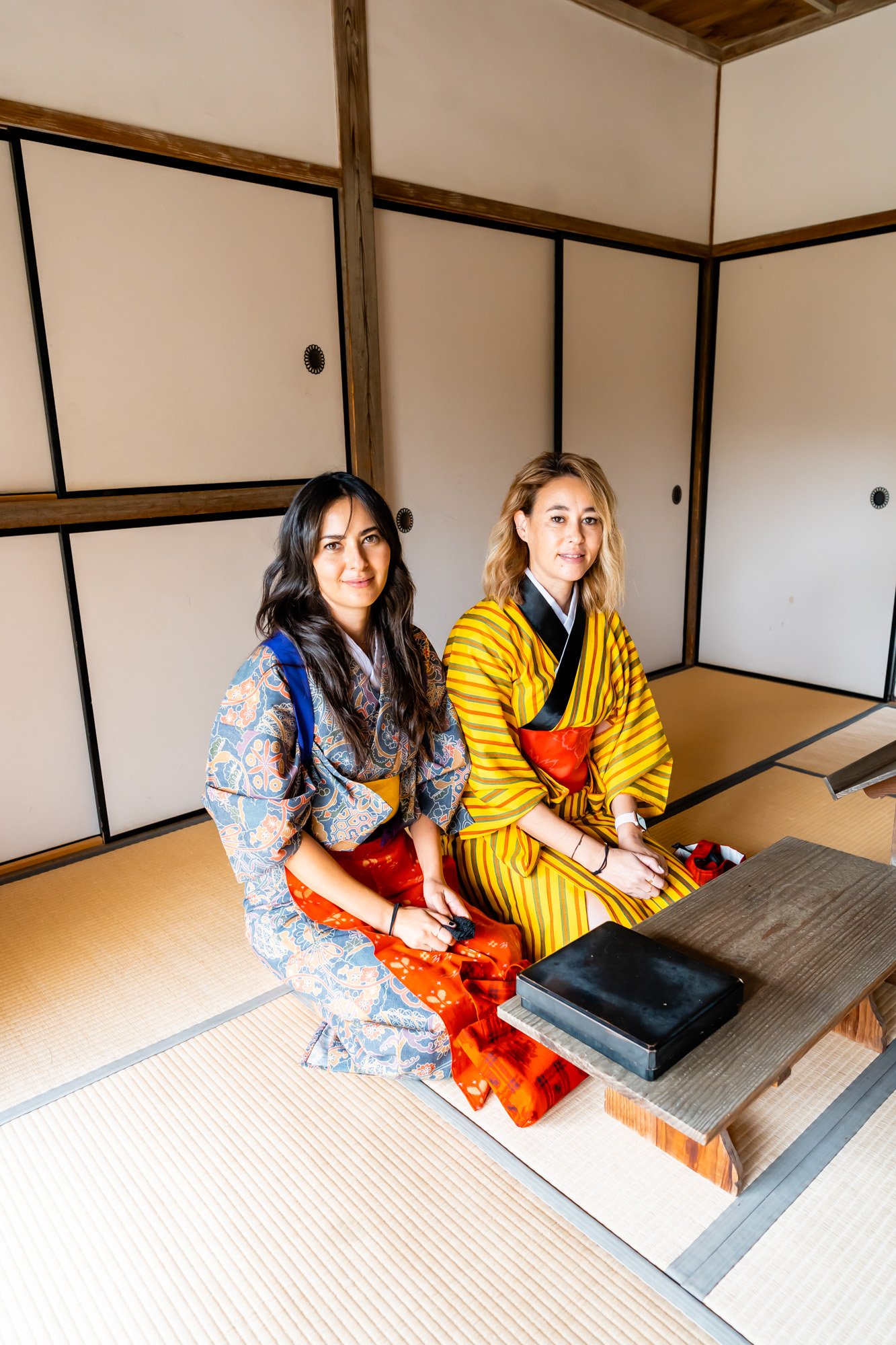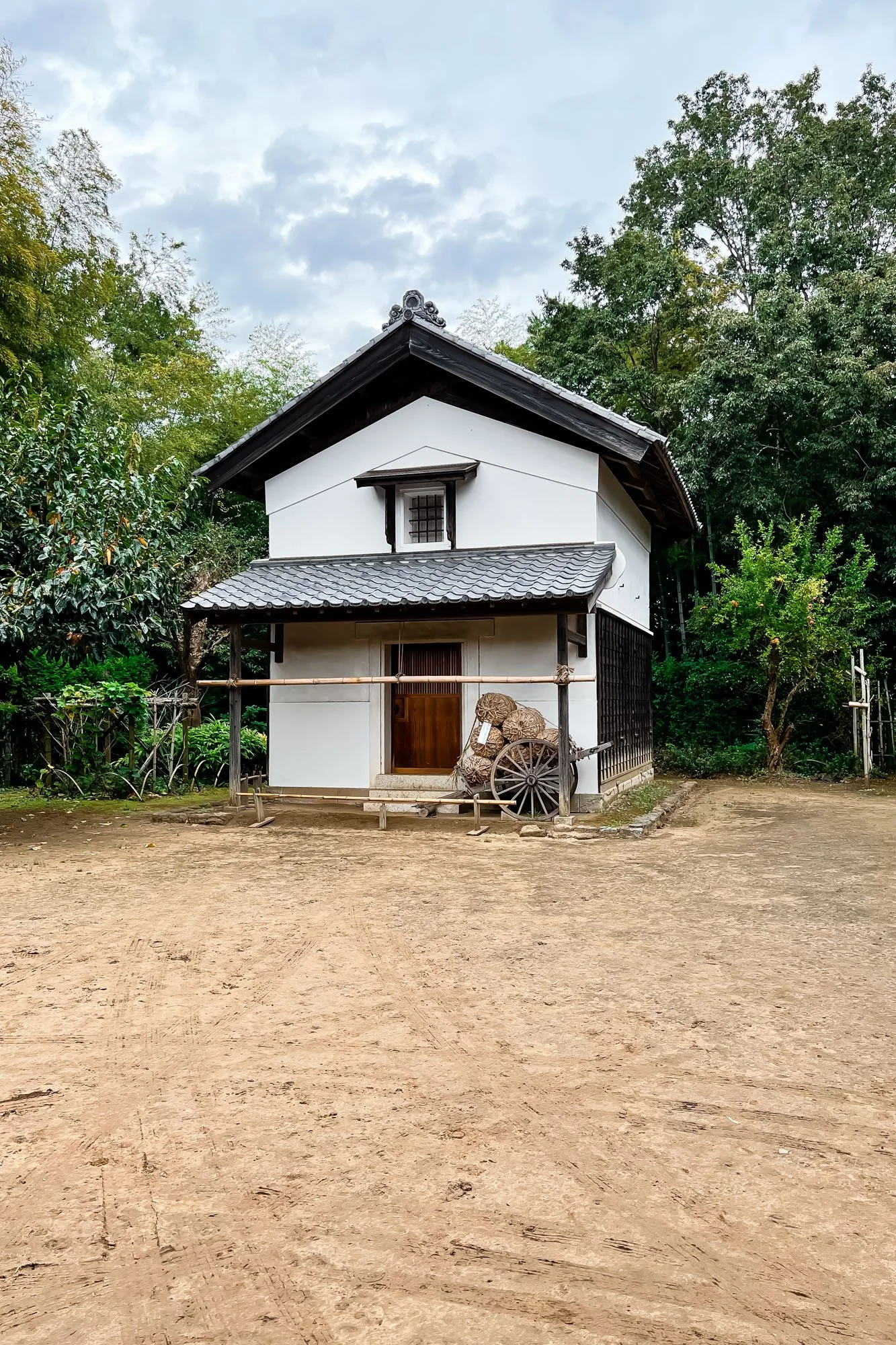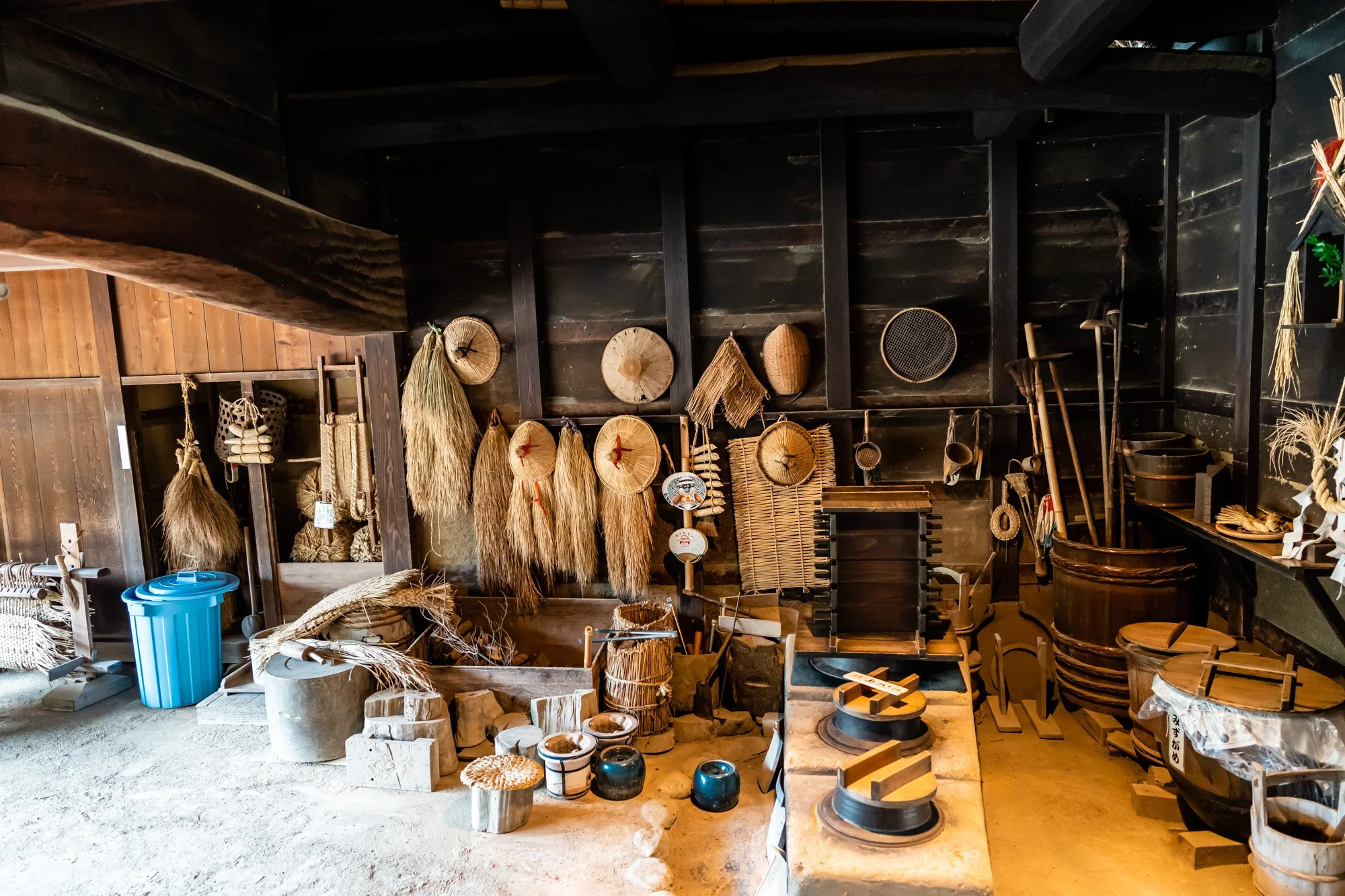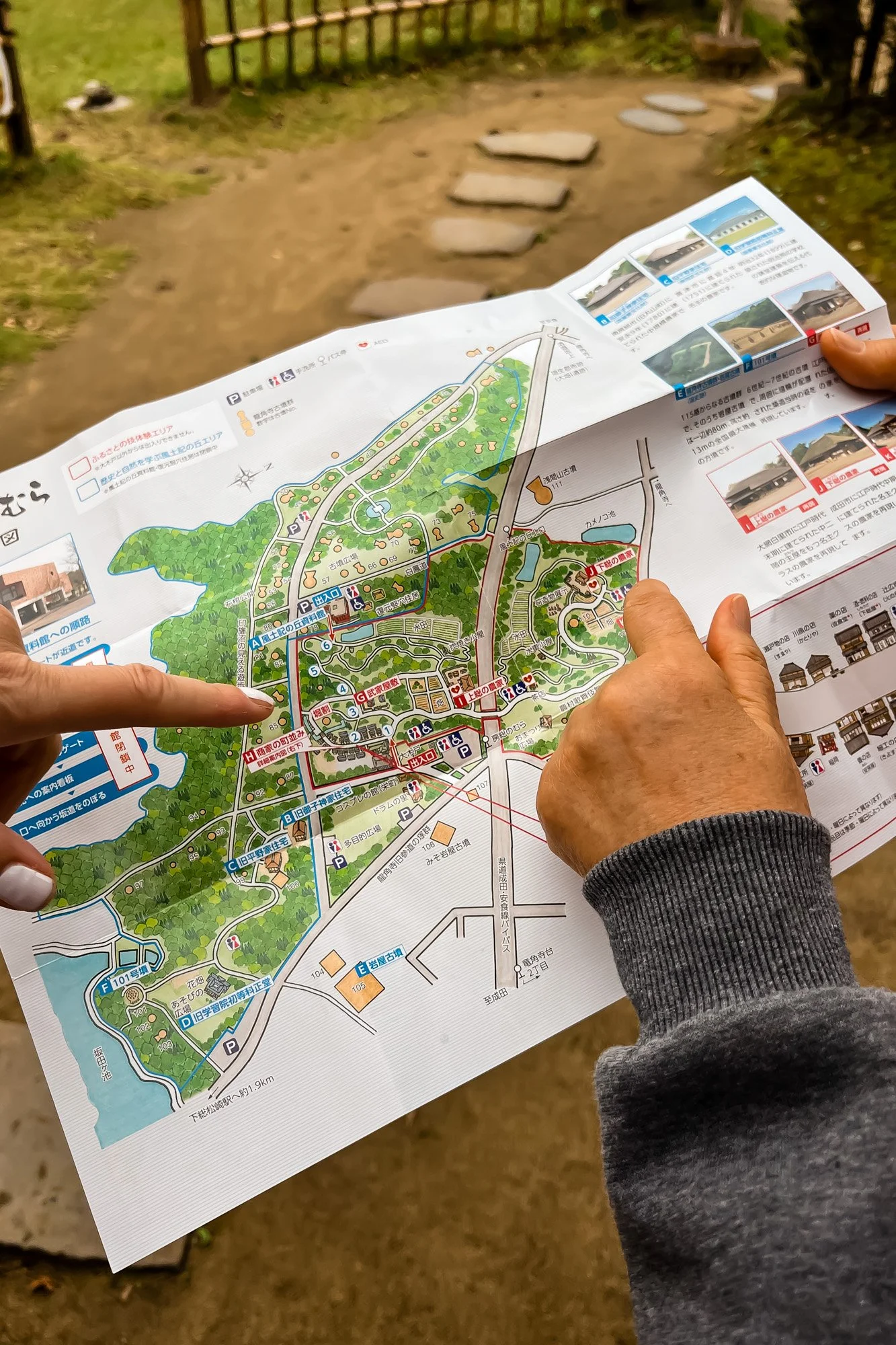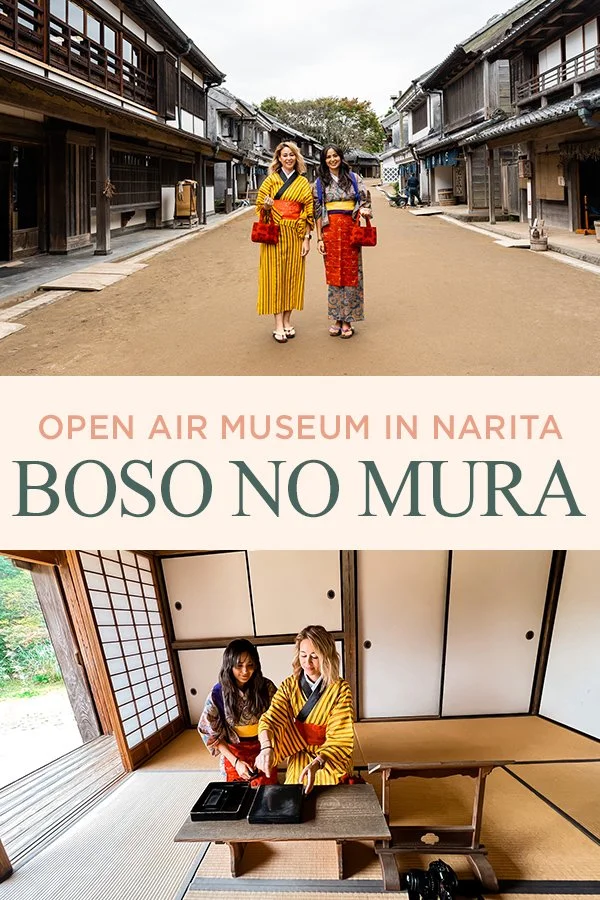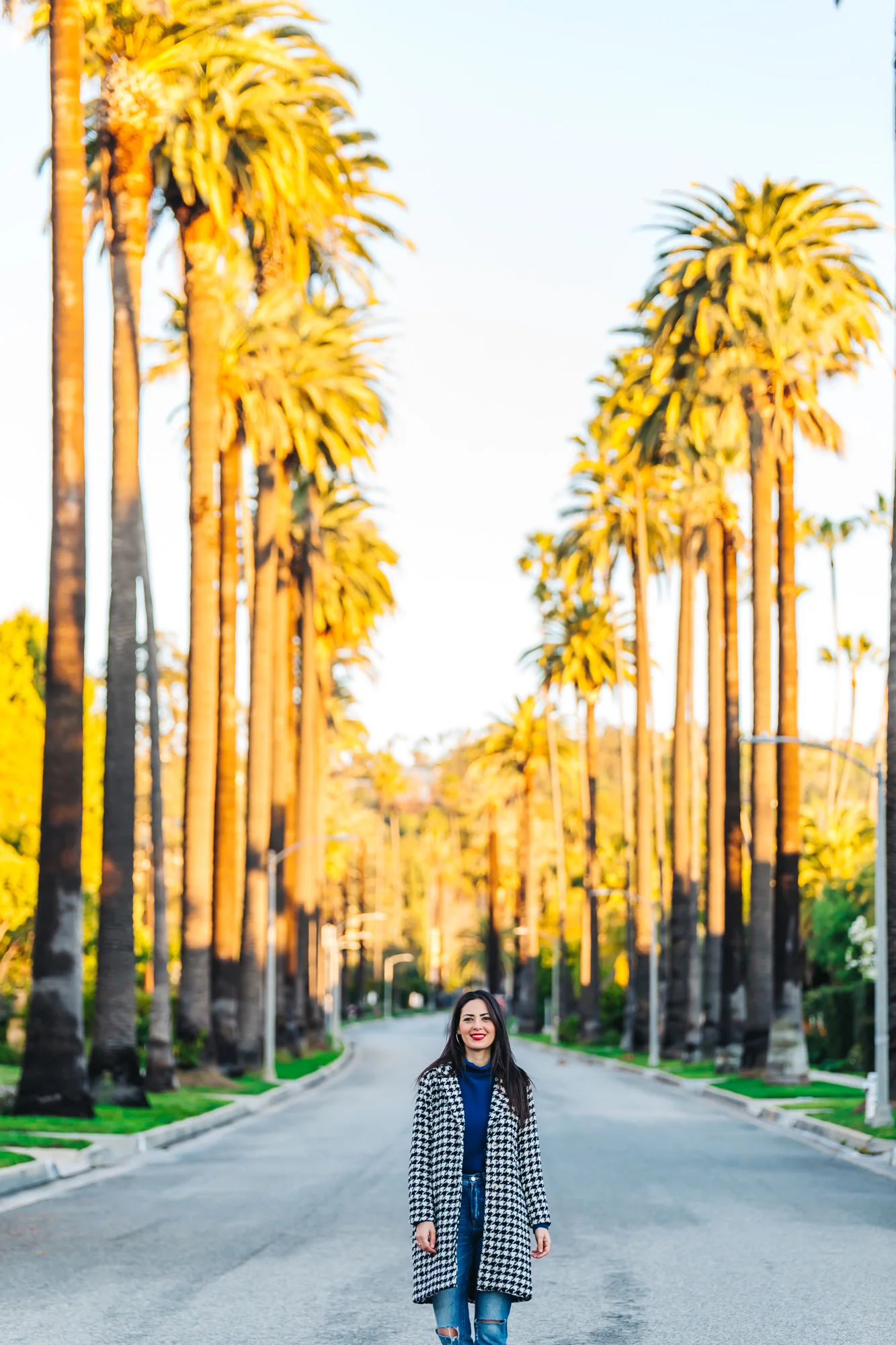Boso no Mura - Cosplay with Edo Period Theme Open Air Museum
/This post contains affiliate links, which means that at no additional cost to you if you click on one of the product links, we may earn a commission. As Amazon Associates, we earn from qualifying purchases.
Narita is our hometown and on our recent trip to Japan, our mother suggested we visit an open air museum called Boso no Mura. She discovered the museum from a local flyer and we were all surprised that we have never heard of this place despite living in the area for over twenty years.
Boso no mura (Village of Boso) is modeled after a traditional Japanese village and is a history museum filled with fun interactive experiences.
How To Get There
If you have a car, it is a pleasant 15-minute drive from JR Narita Station. We visited on a weekday and there was plenty of parking in the main lot.
Chiba Kotsu Bus
No need to worry if you do not have a car. From the West Exit of JR Narita Station, take the bus bound for “Ryukakujidai Shako” and then get off at the Ryukakujidai Ni-Chome stop. It’s about a 20-minute ride and when you get off at the stop, it’s about a 10-minute walk to the entrance.
Entrance Fee
The fee is very reasonable at 300 yen (~$3.00) for adults. Admissions for junior high school students and younger are free. Make sure to bring cash because they do not accept credit cards.
Paying for our tickets at the booth
A VERY Brief History
Boso no Mura is a place that tells the history and culture of Japan from the Edo period, which is from 1603-1867. This was a prosperous and peaceful time in Japan when the arts especially flourished. You may be familiar with some of these like Kabuki, Haiku, and Ukiyo-e.
Walking across the Canal at Boso no Mura
This was also a time when the samurais ruled with a strict four-class system: samurai, farmers, artisans, and merchants. Life during the Edo period consisted of busy streets crowded with pedestrians and large merchant houses.
Cosplay: Wear a Kimono or Be a Ninja or Samurai for a Day
There have been many occasions where we have worn a kimono from weddings to our Seijinshiki (Coming of Age), so it’s definitely not something that is new to us. However, we thought it would be fun to wear a kimono and take fun photos while we explored Boso no Mura.
Cosplay No Yakata
There is a dedicated building right before you pay to enter the outdoor museum. You can’t miss it as there are several banners and signs that advertise “Cosplay no Yakata”. There are several options for cosplay for both men and women.
Anime Cosplay
You can select a traditional kimono or even dress up as a ninja. We were surprised to see fun options like Bleach outfits, which is a popular manga and anime. The prices vary depending on the costume and there is an array of options. Also, instead of sifting through the rack of clothes, there was a convenient catalog with images of the different styles that were available.
Kimono Catalog
There are many different types of kimonos and we have worn silk kimonos to formal occasions and ceremonies, so we decided to wear something more casual. Candy went with a kimono that a typical woman wore to work and Crystal selected a casual kimono as well.
A variety of kimono options
The kimono dressers called Crystal’s kimono the Town Girl (machi musume) kimono. The dressers were actually a bit surprised that we both chose a casual style over an elegant one.
After we made our kimono selection, we were guided to a fitting room where we both had a kimono dresser. There are no buttons or zippers so the art of putting on a kimono is all done by strings. Most people do not know how to dress in a kimono, so hiring a kimono dresser is common as it’s a skill that requires training.
Getting dressed in our casual kimono
Fun fact - our little sister has taken classes and is a kimono dresser, which saves us a ton of money when we all have to dress up in kimonos for a special occasion.
It took about 15-20 minutes to get dressed and we even got to complete the looks with a purse and geta. Geta is a traditional Japanese footwear that looks similar to flip-flops, but definitely not as comfy as flip-flops.
Dressed up in our kimono
Furusato no Waza Arts and Crafts Area
Furusato no Waza Arts and Crafts Area
Now that we were all dressed up, we headed to our first location called the Furusato no Waza. This area features reproductions of houses of merchants, samurai, farmers, etc., as well as landscapes of the Edo period. The reproductions were based on a historic town in Sawara, which is a city about 20 miles from Boso no Mura.
Boso no Mura Shops and Museums
Eight of the sixteen merchant houses had signs that indicated that they have a small exhibit located on the second floor. We entered a few of the buildings and learned various things from farm equipment to the evolution of laundry machines.
Inari shrine
Sitting at the Tea shop
Many of the craft shops offer workshops where you can participate in traditional papermaking, blacksmithing, tea ceremony, and more. Unfortunately, we were there a bit too early, as all the shops didn’t open until noon on weekdays (we arrived around 10 am). The same time goes for restaurants.
Vintage Washing Machine Devices
A taxi during the Edo Period
There was still plenty to explore like the Inari shrine, Blacksmith’s shop, and the Fire watchtower which was all common sights in old towns during the Edo period.
Ceramic Shop
Samurai House - Buke Yashiki
Next, we walked over to a samurai house that was modeled after a middle-ranking samurai of the Sakura Clan (the Fujiwara Clan was the most famous and strongest group). There were tall hedges that surrounded the property, which is a typical style of landscape in those days.
Boso No Mura Grounds in October
Samurai House Entrance
Exploring the Samurai House Property
The house was quite large and at first, we weren’t sure if we could actually go inside since we didn’t see any signs, but then we did notice other people going inside. Just make sure to remove your shoes before going in (removing your shoes before entering any home is a general rule in Japan).
Samurai House Yard and Entrance
Storage Room
Exploring the Samurai House
The tatami rooms were very simple and bare with little to no furniture. The rooms were divided by sliding doors (shoji). One of the rooms had a display of samurai armor (katchu), which consists of a helmet and suit to protect the warrior from battle.
Kazusa District Farmhouse - Kazusa no Noka
The farmhouse, warehouse, and gatehouse were all modeled on the farm of a village headman. The property is spacious and features a large main house, a gatehouse, and an expansive yard.
The Farmhouse
The main house had a mezzanine, which Candy accessed by walking up a very narrow and steep staircase. There was really nothing of significance on this floor, but you do get a great view of the farm. Going back down the stairs was quite the challenge especially since Candy was in her kimono.
Farmer’s Storage House
Mom trying the Takeuma (stilts)
Many of the rooms were laid with tatami with very minimal furniture. The kitchen had an earthen floor and was somewhat detached from the main part of the house. The kitchen was equipped with various kitchen tools which were still in working condition.
Large Kitchen with Hanging Bamboo Rain Coats
We immediately noticed the traditional Japanese raincoat (called mino and made of straw) hanging along the kitchen wall. They stood out and reminded us of manga characters that wore a mino.
Edo Period Children’s Toys
Playing a bamboo hook and ring game
We spent most of our time outside where there were various children’s games and toys. We played around with takekuma stilts, kendama ball-and-cup, spinning tops, and more. We felt like kids again trying out the different games in the olden days.
Inside the Farm House
There is also a lot of farm land where lots of different crops are grown. You can take part in one of their many hands-on farming activities.
Farm land at Boso Village
If you want to try tasks like planting and harvesting, they offer a paddy planting and tea picking workshop. FYI: You’ll need to call or apply in person to reserve these activities.
Cucumber
Peanuts and Red Pepper
So Much More To Explore!
Since it started to rain on us, we had to cut our time short. There was still so much more to explore as the site is a massive 126 acres. We definitely gained a better understanding of the Edo lifestyle and enjoyed taking photos in our kimono.
You can expect to spend at least half a day here as there are numerous workshops, hands-on tours, and various restaurants. If you want to do a little shopping, you can do that as well at the Fusaya Information Center or the Fudoki-no-Oka Museum.
We’ll definitely have to make another visit and try one of the workshops and enjoy some tea and senbei (rice crackers) at the Teahouse.
BOSO NO MURA
ADDRESS: 1028 Ryukakuji, Sakae-machi, Imba-gun, Chiba Prefecture, 270-1506
PHONE: +81-476-95-3333
PIN IT FOR LATER!
Boso No Mura Open Air Museum in Japan















